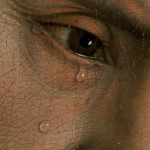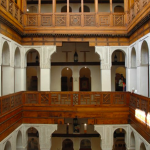TWO LINKS: Christian Wiman:
…I wish I could slow things down at this point, could linger a bit in those months after our marriage. I wish I could feel again that blissful sense of immediacy and expansiveness at once, when every moment implied another, and the future suddenly seemed to offer some counterbalance to the solitary fever I had lived in for so long. I think most writers live at some strange adjacency to experience, that they feel life most intensely in their recreation of it. For once, for me, this wasn’t the case. I could not possibly have been paying closer attention to those days.
Which is why I was caught so off-guard. I got the news that I was sick on the afternoon of my 39th birthday. It took a bit of time, travel, and a series of wretched tests to get the specific diagnosis, but by then the main blow had been delivered, and that main blow is what matters. I have an incurable cancer in my blood. The disease is as rare as it is mysterious, killing some people quickly and sparing others for decades, afflicting some with all manner of miseries and disabilities and leaving others relatively healthy until the end. Of all the doctors I have seen, not one has been willing to venture even a vague prognosis. …
…“It is necessary to have had a revelation of reality through joy,” Weil writes, “in order to find reality through suffering.” This is certainly true to my own experience. I was not wrong all those years to believe that suffering is at the very center of our existence, and that there can be no untranquilized life that does not fully confront this fact. The mistake lay in thinking grief the means of confrontation, rather than love.
more–this excerpt doesn’t do it justice (via Amy Welborn)
and Gracia Burnham:
…Gracia attended a senior-citizen Bible study at the First Baptist Church in Mount Juliet, Tennessee, where she’d been invited to speak.
Fifteen frosted-haired ladies, some wearing sweaters decorated with hollyhocks, gasped as Gracia pulled a piece of stiff batik fabric from a Voice of the Martyrs white plastic shopping bag. Using her teeth, Gracia showed the class how she’d wrapped the fabric, called a malong, around her to make a changing room and a bathroom. The toilet was a theme of the weekend. “The first few times I made a mess of it and had to wait until I got to the next river to wash it,” she said.
…She then showed the ladies how the fabric served as a blanket, a backpack, and even, on one occasion, a stretcher for a 14-year-old Abu Sayyaf member named Ahmed. At first, she had loathed Ahmed for hoarding food when she had none, throwing stones at her while she bathed — fully clothed — in the river, and pushing her along the trail saying “faster, faster.” As she and Martin slowly starved, Gracia prayed to find a way to love Ahmed.
One day, he was injured in a firefight and soiled himself. Gracia could see he was mortified. Thinking of her own son, Zach, who was about the same age, she took Ahmed’s clothes to the river to wash them. There, she was filled with love. The last time Gracia saw Ahmed, who had been carried wounded through the jungle in the malong, like a sling, he had gone stark raving mad and was tied by the hands and feet to the walls of a hut in the southern Philippines. Someone had stuffed a sock in his mouth to keep him from screaming. She wondered aloud to the Bible study class where Ahmed was now — still crazy, perhaps, or pushing another hostage up another steep mountain path. Or, most likely, he had died and gone to hell.
more here if you subscribe to The New Republic; I don’t, so I’m relying on Get Religion’s excerpts and comments here.











